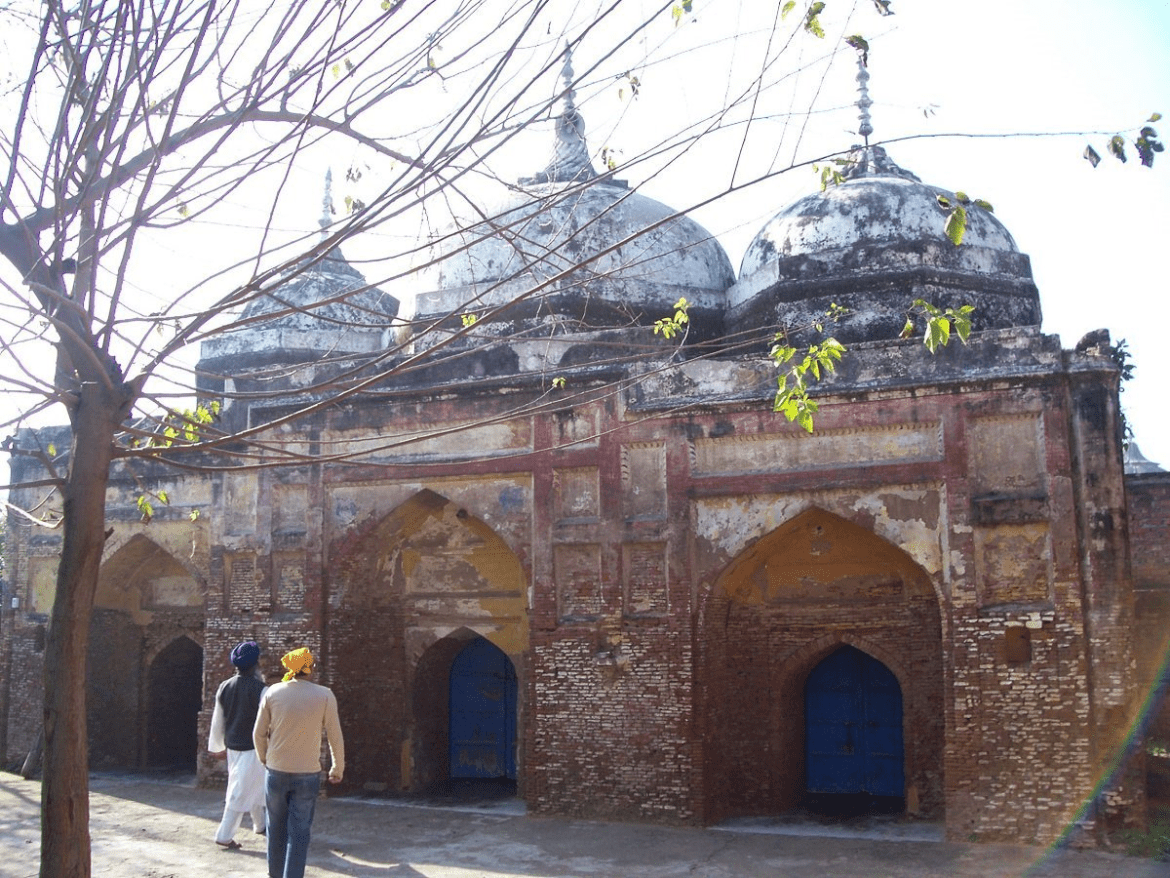AI Generated Summary
- It could be for the reason that the structure of the mosque was built on the instructions of the sixth Guru Hargobind Ji himself around 1630 for the Muslim community, who were very few in number in the town, to worship according to their faith.
- There is actually the structure of a mosque built on the directions of the Sixth Guru of the Sikhs Guru Hargobind Ji after winning the battle against Faujdar Abdul Khan of Jalandhar during the rule of the emperor Shah Jahan still intact.
- Rightly highlighted as a symbol of religious tolerance and coexistence, the structure was strengthened with support from UNESCO and UNDP and the MOU was signed with the then occupant Baba Kirtan Singh to preserve its original structure in the future as he has already been doing.
On the face of it, the phrase ‘Guru Ki Maseet’ is rather enigmatic. One is puzzled over the collocation of two words and institutions ‘Guru’ and ‘Maseet’ with the first related to the Sikh community and the latter to the Muslim community. But when we visit a four-hundred-year-old village named Sri Hargobindpur in the Gurdaspur district of Indian Punjab, the meaning of the phrase becomes as clear as sunshine. There is actually the structure of a mosque built on the directions of the Sixth Guru of the Sikhs Guru Hargobind Ji after winning the battle against Faujdar Abdul Khan of Jalandhar during the rule of the emperor Shah Jahan still intact. Although the Muslim residents of the village left for Pakistan in the 1947 partition, the mosque has stood its time. It has not been vandalized, nor has it been used for ordinary usage. The mosque has been looked after by a sect of Nihangs and Guru Granth Sahib has been installed there for recitation and to protect it from desecration by its use for nonreligious activities. People in the village know it by the name Guru Ki Maseet, a mosque; not a Gurdwara or a Mandir or a church. The mosque stands as the emblem of mutual respect, tolerance, and coexistence.
The structure called Guru Ki Maseet (Guru’s Mosque) drew the attention of a UNESCO and UNDP project Culture for Peace in the year 2003. Rightly highlighted as a symbol of religious tolerance and coexistence, the structure was strengthened with support from UNESCO and UNDP and the MOU was signed with the then occupant Baba Kirtan Singh to preserve its original structure in the future as he has already been doing. The structure was originally built as a mosque but was used as a Gurdwara after it was abandoned post-partition in 1947. Fortunately, it was not demolished and changed into a new structure. It could be for the reason that the structure of the mosque was built on the instructions of the sixth Guru Hargobind Ji himself around 1630 for the Muslim community, who were very few in number in the town, to worship according to their faith. That is why this 393-year-old structure is called Guru Ki Maseet.
The present-day town was originally inhabited by the fifth Guru of the Sikhs, Guru Arjun Dev Ji on the ruins of an ancient village called Rohila. The site of the town was in the form of a high mound suitable for a settlement on the bank of the river Beas. After the martyrdom of Guru Arjun Dev ji, Jahangir took control of the whole region and gave its charge to Diwan Chandu Lal, an influential Hindu moneylender and chief minister of Emperor Jahangir. The settlement soon turned into ruins.
Later around 1629 while coming from Kartarpur, Guru Hargobind crossed the river Beas and planned to spend the rainy season at the site of the old Rohila village and the settlement inhabited by his father Guru Arjun Dev Ji. Finding the site pleasant and attractive, he decided to re-establish a township there, which was met with some resistance by Faujdar Abdul Khan of Jalandhar. Abdul Khan attacked Guru Hargobind with an army of 15,000 soldiers. There was a fierce war for three days, in which Abdul Khan, his son Nabi Bakhsh, and his five generals were killed. Guru Hargobind and his Sikhs won the battle. The settlement that followed is known by the Guru’s name Sri Hargobindpur.
Following the victory in the battle, the Guru wanted to assure the Muslim community there that he had nothing against them and their religion. Thus he got a mosque built for them along with 40 wells there. The mosque has since then been called Guru Ki Maseet.




